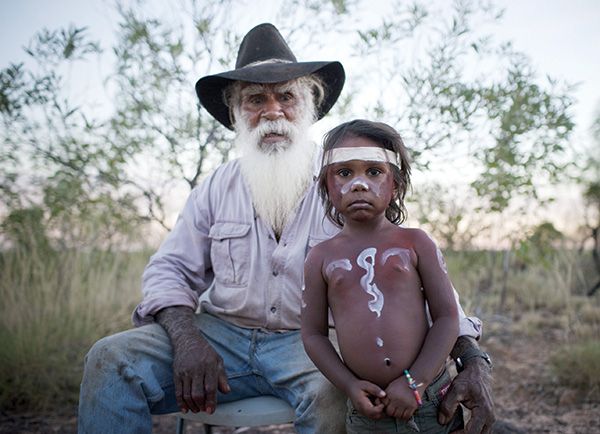Indigenous Australians are people with familial heritage to groups that lived in Australia before British colonisation. They include the Aboriginal and Torres Strait Islander peoples of Australia.
The term Aboriginal and Torres Strait Islander peoples or the person's specific cultural group, is often preferred, though the terms First Nations of Australia, First Peoples of Australia and First Australians are also increasingly common.The time of arrival of the first human beings on the continent and nearby islands is a matter of debate among researchers. The earliest conclusively human remains found in Australia are those of Mungo Man LM3 and Mungo Lady, which have been dated to around 50,000 years BP. Recent archaeological evidence from the analysis of charcoal and artefacts revealing human use suggests a date as early as 65,000 BP.Luminescence dating has suggested habitation in Arnhem Land as far back as 60,000 years BP.Evidence of fires in South-West Victoria suggest "human presence in Australia 120,000 years ago", although more research is required.Genetic research has inferred a date of habitation as early as 80,000 years BP. Other estimates have ranged up to 100,000 years and 125,000 years BP.
The population of Aboriginal Australians at the time of permanent European settlement is contentious and has been estimated at between 318,000[9] and 1,000,000[10] with the distribution being similar to that of the current Australian population, the majority living in the south-east, centred along the Murray River. A population collapse principally from disease followed European settlement, beginning with a smallpox epidemic spreading three years after the arrival of Europeans. Massacres and frontier conflicts involving European settlers also contributed to depopulation. This violence has been characterised as genocide by some.
Although there are a number of commonalities among the various Aboriginal peoples, there is also a great diversity among different communities and societies in Australia, each with its own mixture of cultures, customs and languages. In present-day Australia these groups are further divided into local communities. At the time of initial European settlement, over 250 Aboriginal languages were spoken; it is currently estimated that 120 to 145 of these remain in use, but all except 13 are considered endangered.Aboriginal people today mostly speak English, with Aboriginal phrases and words being added to create Australian Aboriginal English (which also has a tangible influence of Indigenous languages in the phonology and grammatical structure).
The Australian Census includes counts of Aboriginal peoples, based on questions relating to individuals' self-identification as Aboriginal, Torres Strait Islander or of both origins. As of 30 June 2016, the count was 798,365 or 3.3% of Australia's population. Since 1995, the Australian Aboriginal flag and the Torres Strait Islander flag have been among the official flags of Australia.
BLOG COMMENTS POWERED BY DISQUS






.jpg)

